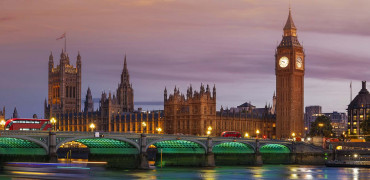Despite some high-profile names distancing themselves from Diversity, Equity & Inclusion, Jim McClelland explains why the doubters are wrong, and DEI is here to stay.
In the world of human resources, regression is the new progression.
That is the signal being sent down from the C-Suite of certain corporates of late. Fairness is off the agenda.
Such talk carries policy implications for recruitment and retention. So, as an organisational framework, Diversity Equity & Inclusion (DEI) has experienced a bit of a backlash of late.
Last month saw moves away from DEI policies announced by two famous uber-traditional US brands within just a matter of days: first came Harley-Davidson; then Jack Daniel’s.
In both cases, the finger has been pointed at hostile activist campaigning described as either ‘anti-woke’ or ‘anti-DEI’. So, is the honeymoon officially over for DEI and HR?
The global built environment sector needs different people, not just more.
Interest and investment up and down
Well, yes and no: The mood is muddled, and the messages are mixed.
Making predictions for 2024, leading advisory firm Forrester forecast a drop in investment in what it calls ‘employee experience’ (EX). Exemplifying this recessionary trend in EX was falling financial support for organisational DEI, down from 33% in 2022 to 20% in 2024.
By contrast, the annual Workday survey of 2,600 business leaders found DEI had bounced back following a difficult 2023. Findings revealed almost 8 out of 10 respondents (78%) felt its importance has increased over the past 12 months. An even greater number (85%) stated that they currently have budget for DEI initiatives, in a figure up 11% year-on-year.
The truth is that almost any spend allocated in support of sustainability issues is under scrutiny at present, especially as share prices come under pressure. With economic growth patchy, or non-existent, business revenues and returns are firmly in the spotlight.
DEI is therefore not the only aspiration feeling the pinch — belts are tightening around carbon reduction and net zero budgets, too. The thin line between long-term efficiencies and short-term cuts is being crossed all too easily in search of a fast bottom-line fix.
Whilst the honeymoon may well be over, though, the marriage is still sound.
Role models for women in construction
Going forward, then, industries and companies need to double-down and find a way to help HR continue to invest (literally) in deepening its relationship to DEI.
In the case of the built environment sector, there is a long way yet to go.
Take the number of women working in construction in the UK, for example. The total peaked around 341,000 in Q2 last year, representing just 15.8% of the overall workforce.
That figure has fallen lower again since but breaking the headline total down does reveal some pockets of promise. For instance, Go Construct reports that 37% of new entrants coming into the construction industry from higher education are women.
Plus, standout examples are both emerging and enduring amongst the trades, too.
Former international rugby union player for Wales Philippa Tuttiett runs Female Builders & Interiors (FBI). First founded back in 2007, the firm features an all-women workforce that currently includes an electrician and a carpenter, as well as an apprentice.
Active in a very male-dominated field, Founder and CEO of Stopcocks, Hattie Hasan was even awarded an MBE for ‘Services to women in the plumbing and heating industries’. Since Stopcocks started in 1990, the trailblazer has grown to become the only national franchise of female plumbers in the world, helping train dozens of women tradespeople.
Pioneering entrepreneurs like Philippa and Hattie have become influential role models and high-vis champions for women in construction, flying the flag as after-dinner speakers and on national TV. Alone, however, they can never do enough to effect systemic change.
The good news is that they are not alone now; and increasingly cannot be so in the future.
Demand for different, not just more
Social justice and labour rights aside, one reason why construction must embrace change is simple economics. The business case for DEI is undeniable is an industry desperate to attract talent not only to do the jobs of today but tackle the skills shortage of tomorrow, too.
The Construction Industry Training Board (CITB) has calculated that in an industry forecast to grow at 2.4% a year between now and 2028, more than 251,500 extra workers will be needed over the next five years, with construction employment rising to 2.75M.
Moreover, the global built environment sector needs different people, not just more.
Digitalisation represents both a business opportunity and a skills challenge.
Based on a survey of over 1,300 industry professionals in 15 countries, a report by construction, FM and real estate platform PlanRadar revealed that while almost all respondents (97%) expect to see increased investment in digitalisation, nearly 8 out of 10 (77%) admit they find the implementation of new technologies difficult. They need help.
So, for the future of an industry in transition like construction, all of this means the socio-economic imperative is clear when it comes to people and growth: It is DEI, or D-I-E.
Jim McClelland is a sustainable futurist, editor, journalist and speaker




